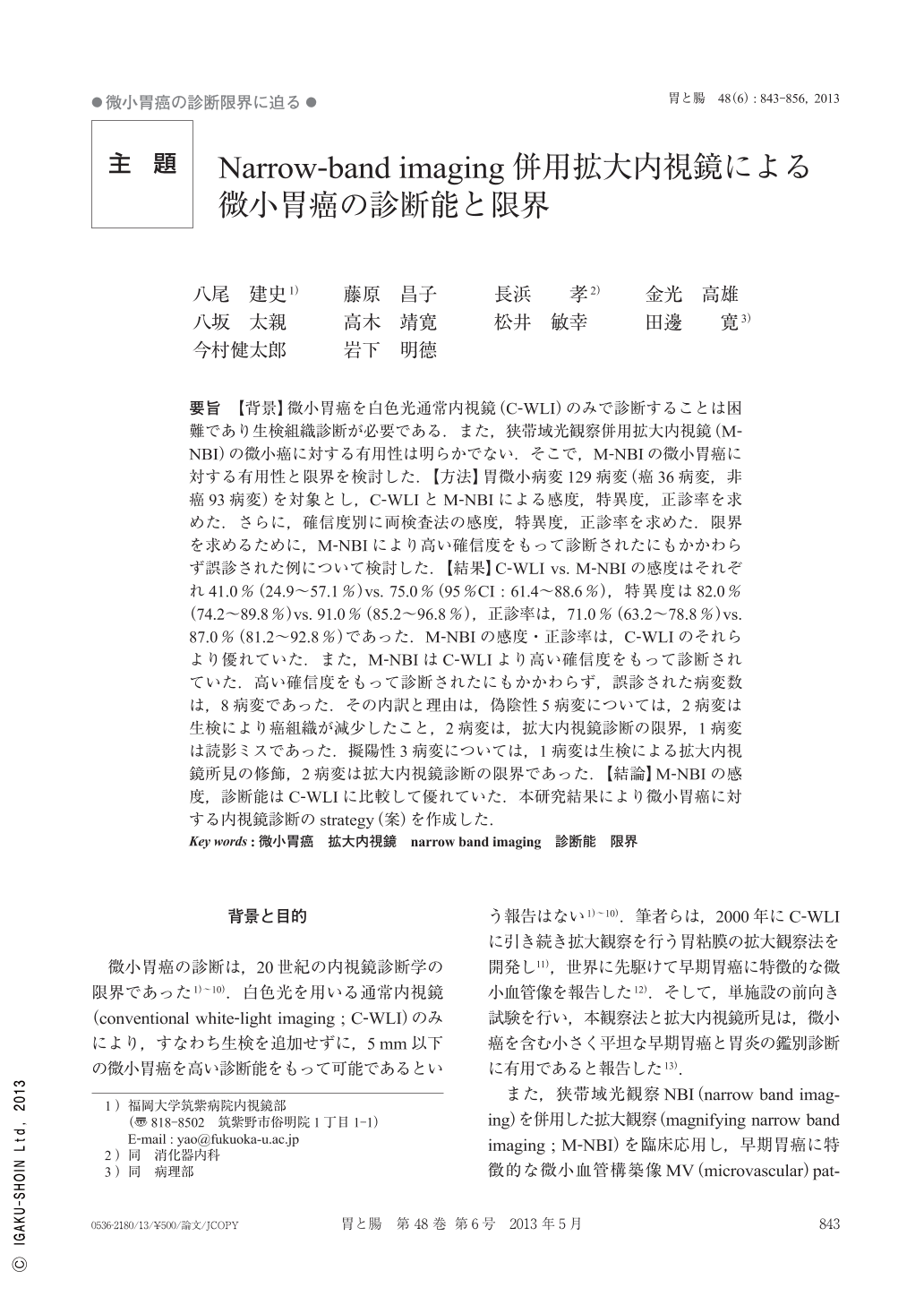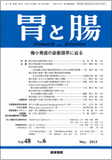Japanese
English
- 有料閲覧
- Abstract 文献概要
- 1ページ目 Look Inside
- 参考文献 Reference
- サイト内被引用 Cited by
要旨 【背景】微小胃癌を白色光通常内視鏡(C-WLI)のみで診断することは困難であり生検組織診断が必要である.また,狭帯域光観察併用拡大内視鏡(M-NBI)の微小癌に対する有用性は明らかでない.そこで,M-NBIの微小胃癌に対する有用性と限界を検討した.【方法】胃微小病変129病変(癌36病変,非癌93病変)を対象とし,C-WLIとM-NBIによる感度,特異度,正診率を求めた.さらに,確信度別に両検査法の感度,特異度,正診率を求めた.限界を求めるために,M-NBIにより高い確信度をもって診断されたにもかかわらず誤診された例について検討した.【結果】C-WLI vs. M-NBIの感度はそれぞれ41.0%(24.9~57.1%)vs. 75.0%(95%CI:61.4~88.6%),特異度は82.0%(74.2~89.8%)vs. 91.0%(85.2~96.8%),正診率は,71.0%(63.2~78.8%)vs. 87.0%(81.2~92.8%)であった.M-NBIの感度・正診率は,C-WLIのそれらより優れていた.また,M-NBIはC-WLIより高い確信度をもって診断されていた.高い確信度をもって診断されたにもかかわらず,誤診された病変数は,8病変であった.その内訳と理由は,偽陰性5病変については,2病変は生検により癌組織が減少したこと,2病変は,拡大内視鏡診断の限界,1病変は読影ミスであった.擬陽性3病変については,1病変は生検による拡大内視鏡所見の修飾,2病変は拡大内視鏡診断の限界であった.【結論】M-NBIの感度,診断能はC-WLIに比較して優れていた.本研究結果により微小胃癌に対する内視鏡診断のstrategy(案)を作成した.
Objectives : We investigated the diagnostic performance of M-NBI(magnifying narrow-band imaging)and conventional white-light imaging and determined limitations of M-NBI.
Methods : Consecutive minute lesions no more than 5mm were included in this study. The primary endpoint was sensitivity, the secondary endpoints were specificity and overall accuracy for both M-NBI and C-WLI(conventional white-light imaging). In order to determine the limitations, we reviewed clinical and pathological reports of the misdiagnosed lesions.
Results : Overall, 129 lesions(36 cancers and 93 non-cancer lesions)were included in the study. The sensitivity of C-WLI vs. M-NBI was 41.0%(24.9~57.1%)vs. 75.0%(95% CI : 61.4~88.6%), respectively. The specificity and the accuracy were 82.0%(74.2~89.8%)vs. 91.0%(85.2~96.8%)and 71.0%(63.2~78.8%)vs. 87.0%(81.2~92.8%), respectively. The most significant misdiagnosis of M-NBI were due to artifacts caused by previous biopsies, limitations of criteria and interpretation errors.
Conclusion : The sensitivity and the accuracy of M-NBI is superior to those of C-WLI although M-NBI has limitations in exceptional cases.

Copyright © 2013, Igaku-Shoin Ltd. All rights reserved.


